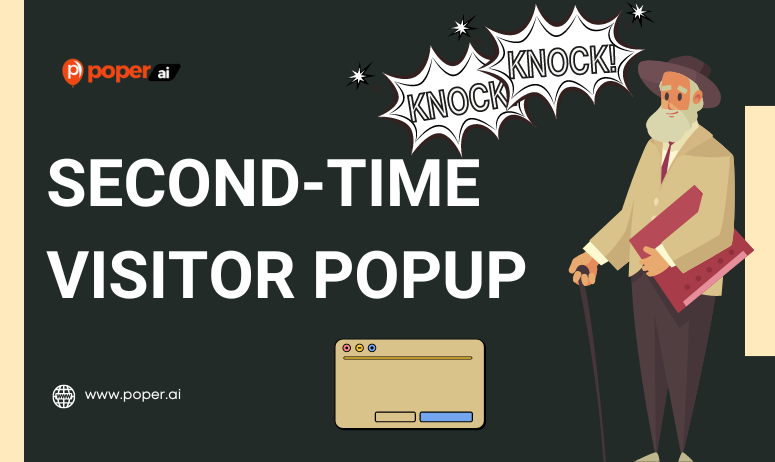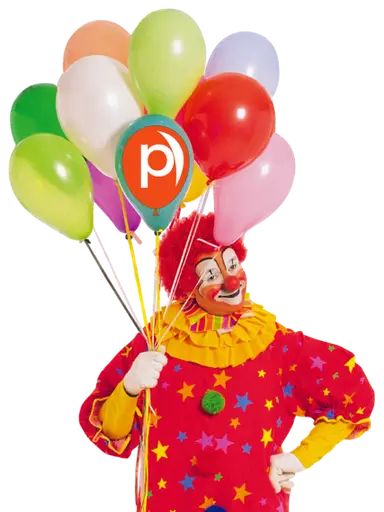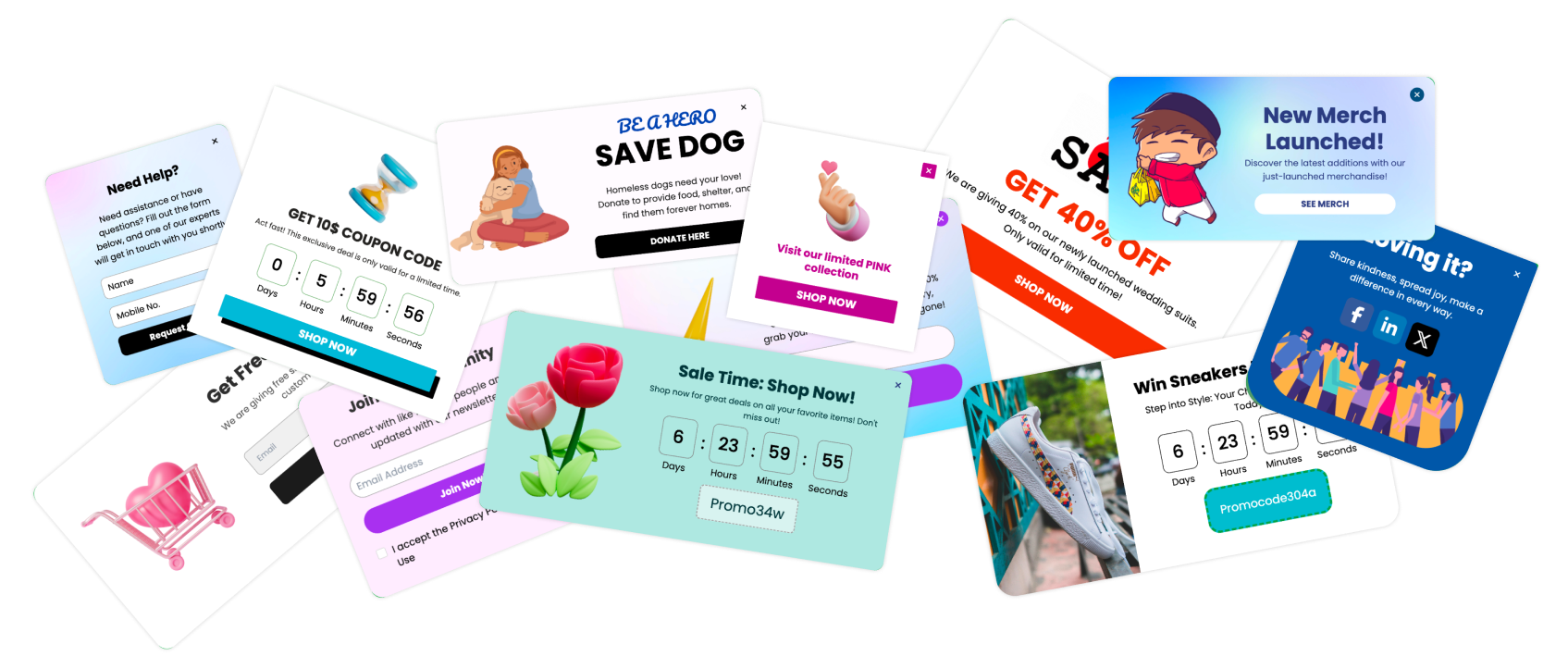When users come back to your site, it indicates a growing interest. Targeting these repeat visitors with tailored messages can significantly boost your conversion rates and deepen user engagement.
Brief Explanation of What Second-Time Visitor Popups Are
Second-time visitor popups are interactive messages specifically designed to engage users who have visited your website before. Unlike generic popups that target all visitors, these are personalized to acknowledge the user's return, offering tailored content or incentives based on their previous interactions. By recognizing and rewarding returning visitors, you can create a more personalized and effective user experience.
What are second-time visitor popups and why are they important?
Second-time visitor popups are interactive messages tailored for users who have visited a website before. They acknowledge the return visit and offer personalized content or incentives, significantly enhancing user engagement and conversion rates by creating a more personalized experience.
Understanding Second-Time Visitor Popups
Definition of Second-Time Visitor Popups
Second-time visitor popups are dynamic messages that appear when a user who has previously visited your site returns. These popups can be tailored to acknowledge their return and offer content or incentives based on their past interactions. This targeted approach helps in creating a more personalized and engaging experience for the visitor.
Why Second-Time Visitor Popups Matter in Digital Marketing
Digital marketing thrives on relevance and personalization. Second-time visitor popups leverage the familiarity of returning visitors to provide more relevant content, which can lead to higher engagement rates. By targeting users who have shown interest in your site before, you can effectively nurture leads and drive conversions. These popups can offer special discounts, exclusive content, or simply a warm welcome back, all of which contribute to a positive user experience and increased likelihood of conversion.
The Psychological Impact of Targeted Popups
Leveraging Familiarity: Why Targeting Repeat Visitors Works
When users return to your site, they are already familiar with your brand. This familiarity can be leveraged to build trust and encourage further interaction. Targeted popups for repeat visitors can acknowledge this familiarity, making users feel recognized and valued, which can significantly enhance their engagement and loyalty.
Building Trust Through Consistency and Recognition
Consistency in messaging and recognition of past interactions help build trust with users. When visitors see that your site remembers them and offers tailored content, they are more likely to trust your brand and engage with your offers. This trust is crucial for driving conversions and fostering long-term relationships with your audience.
Segmenting Your Audience
Importance of Distinguishing Between First-Time and Repeat Visitors
Understanding the difference between first-time and repeat visitors is crucial for effective targeting. First-time visitors need introductory content to get to know your brand, while repeat visitors are ready for more personalized and deeper engagement.
Tools and Techniques for Tracking Visitor Frequency
To implement second-time visitor popups effectively, you need to track how often users visit your site. Tools like Google Analytics, cookies, and CRM systems can help you monitor visitor frequency and behavior, enabling you to tailor your popups accordingly.
Designing Popups for Second-Time Visitors
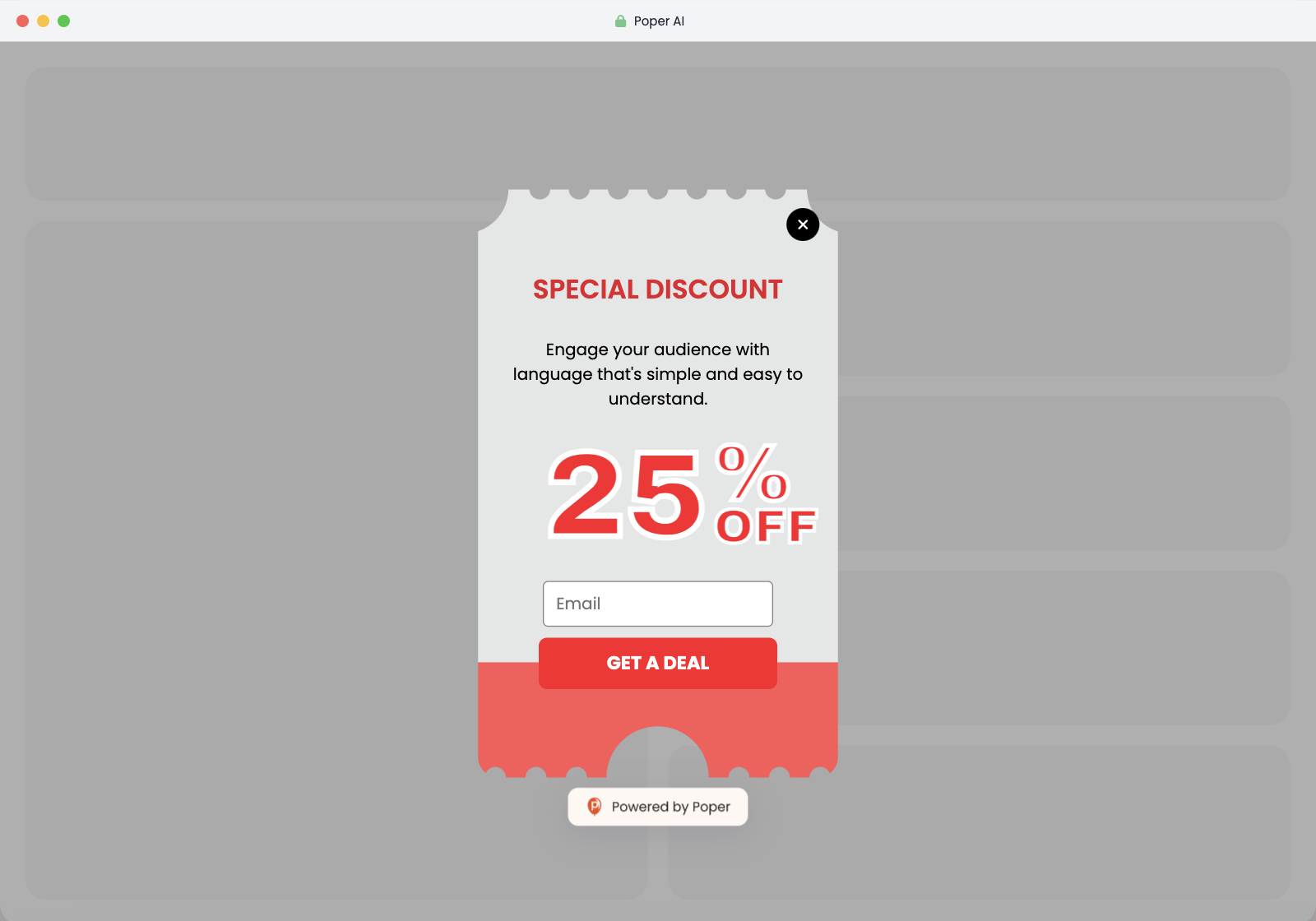
How to Tailor Popup Design to Appeal to Repeat Visitors
Designing popups for returning visitors involves creating messages that acknowledge their previous visit and provide additional value. Use personalized greetings, reference their last interaction, and offer something new or exclusive to keep them engaged.
Examples of Effective Second-Time Visitor Popup Designs
Welcome Back Offers: "Welcome back! Here's a 10% discount just for you."
Exclusive Content Access: "As a returning visitor, enjoy early access to our latest blog post."
Progress Reminders: "You started this course last time. Ready to continue?"
Content Strategies for Second-Time Visitor Popups
Developing Compelling Content That Resonates with Returning Users
The content of your popup should resonate with the user's previous interactions on your site. Consider offering personalized recommendations, exclusive discounts, or early access to new content.
Personalization Tips to Enhance Relevance and Engagement
Use Visitor's Name: If you have their information, addressing them by name can create a personal touch.
Reference Past Behavior: Mentioning products they viewed or content they engaged with can make the popup more relevant.
Offer Incentives: Provide something of value, such as a discount or exclusive content, to encourage further engagement.
Timing and Triggering Techniques
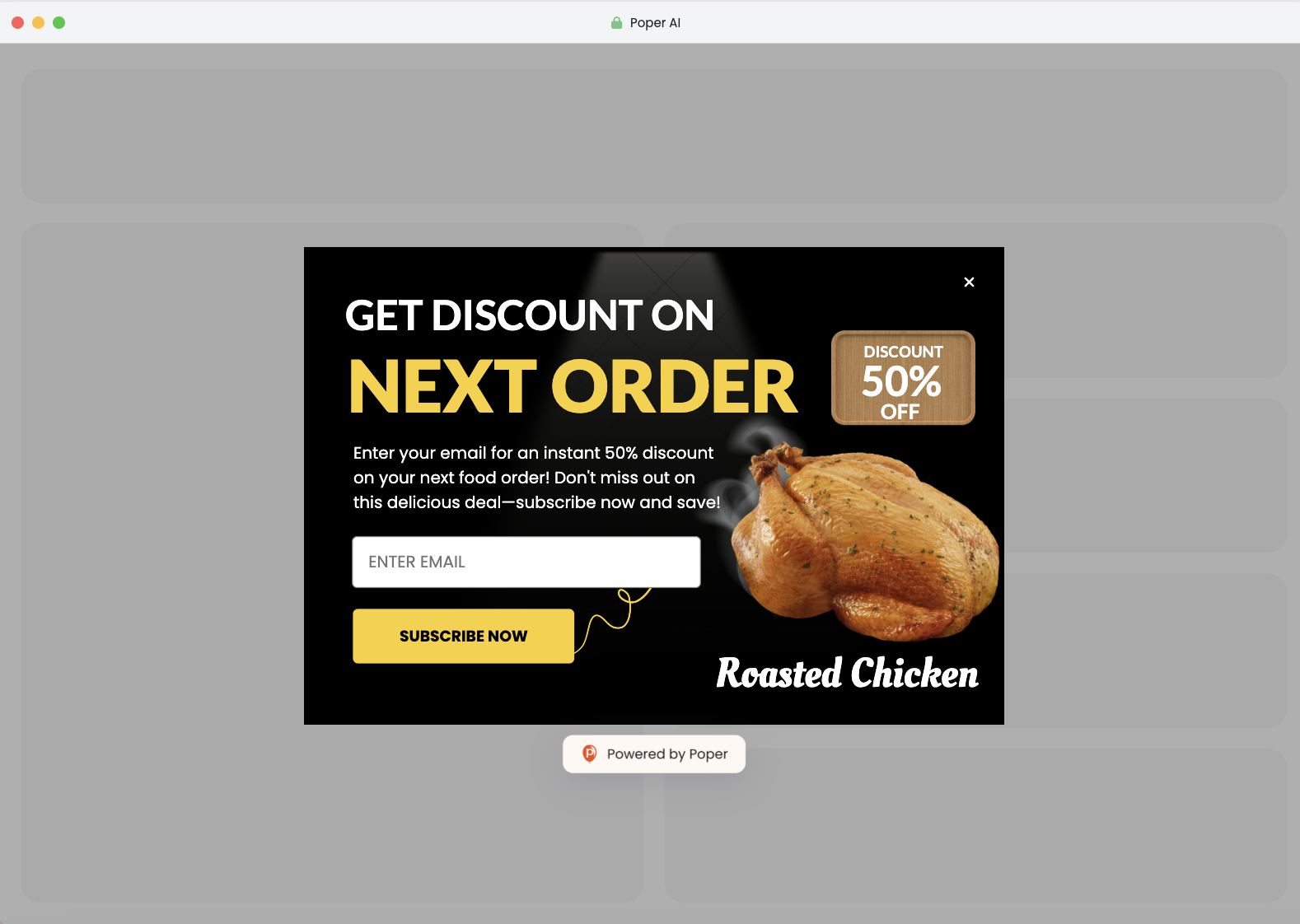
Optimal Timing for Displaying Popups to Second-Time Visitors
Timing is critical for popup effectiveness. Display your popups at moments when the user is most likely to engage, such as after they've spent a certain amount of time on the page or when they show intent to leave.
Trigger Events That Are Effective for Second-Time Visitor Popups
Scroll Depth Triggers: Show the popup when a user scrolls down a certain percentage of the page.
Exit-Intent Triggers: Trigger the popup when the user moves their cursor towards the browser’s close button.
Time-Based Triggers: Display the popup after the user has spent a predetermined amount of time on the site.
Technical Setup for Second-Time Visitor Popups
Implementing Cookies and Tracking for Accurate Visitor Identification
Cookies and tracking scripts are essential for identifying returning visitors. Set up cookies that store visitor information and use these to trigger your second-time visitor popups.
Integration with Website Analytics and CRM Systems
Integrate your popups with analytics tools and CRM systems to get a comprehensive view of visitor behavior and engagement. This integration allows for more accurate targeting and personalized content delivery.
Using A/B Testing to Refine Popups
Importance of Testing Popups for Second-Time Visitors
A/B testing helps you determine what works best for your audience. By testing different popup designs, messages, and triggers, you can optimize your popups for maximum effectiveness.
Key Metrics to Track and Analyze During A/B Testing
Conversion Rates: Measure how many users take the desired action after seeing the popup.
Engagement Rates: Track how many users interact with the popup.
Bounce Rates: Monitor if the popup causes users to leave your site.
Best Practices for Second-Time Visitor Popups
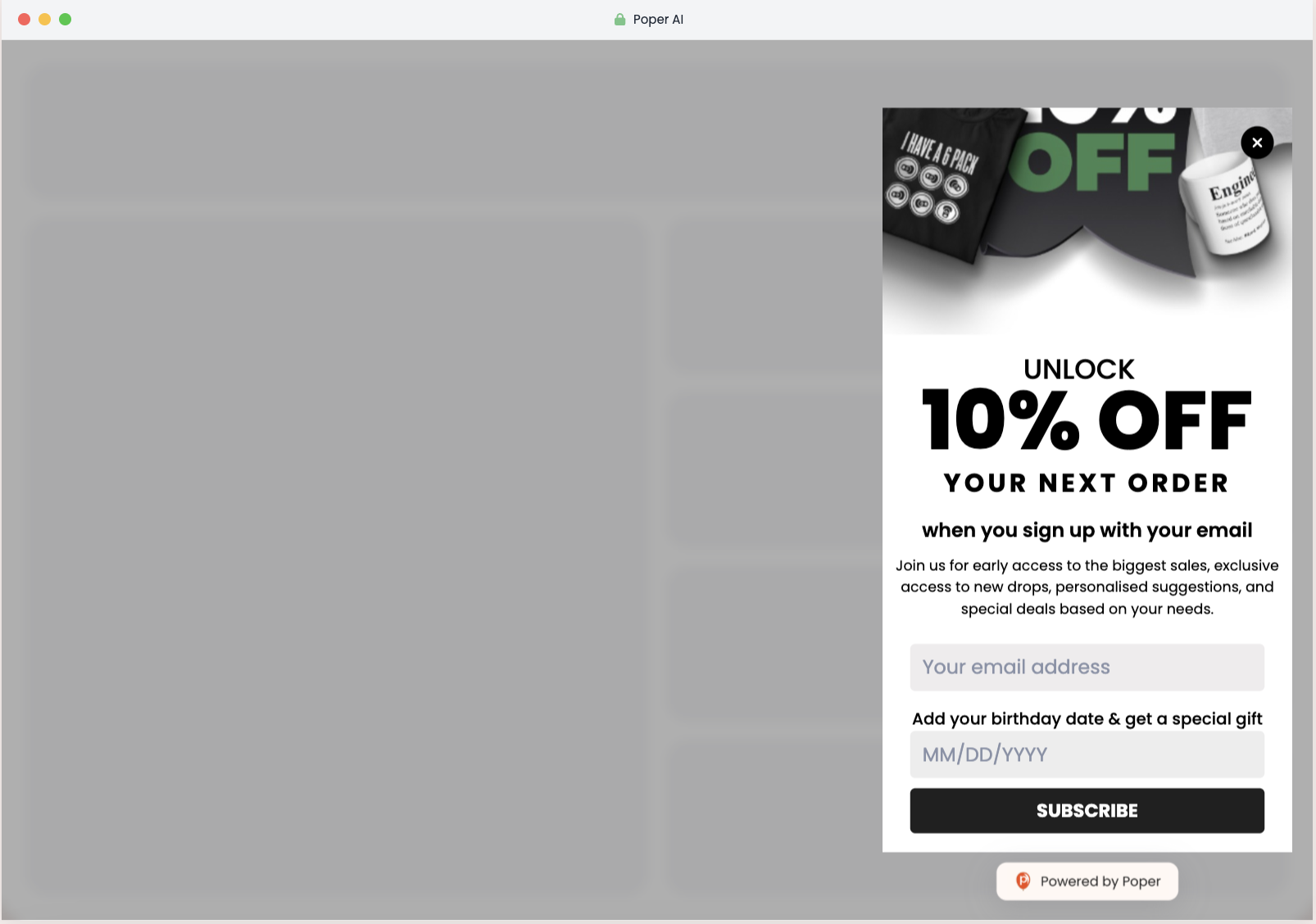
Dos and Don'ts for Crafting Effective Second-Time Visitor Popups
Do:
Personalize the message to acknowledge their return.
Offer something valuable and relevant.
Make the popup easy to close.
Don't:
Use aggressive or intrusive popups.
Overwhelm the user with too much information.
Show the same popup repeatedly in a single session.
Common Mistakes to Avoid with Repeat Visitor Popups
Ignoring User Preferences: Not all returning visitors will want to see a popup. Respect their preferences and provide an easy way to opt out.
Using Generic Messages: Generic messages fail to leverage the user's familiarity with your site. Personalization is key.
Legal and Compliance Issues
Ensuring Compliance with Data Privacy Laws (e.g., GDPR)
Make sure your popups comply with data privacy laws by obtaining explicit consent for data collection and providing clear information about how user data will be used. Include a link to your privacy policy and ensure users can easily opt out of tracking.
Best Practices for Ethical Popup Deployment
Transparency: Be clear about why you're showing the popup and what you expect the user to do.
Consent: Always ask for permission before collecting personal data.
User Control: Provide options for users to manage their preferences and data.
Advanced Popup Features and Tools
Dynamic Content Insertion Based on User Behavior
Use dynamic content to tailor popup messages based on the user's behavior on your site. For example, show product recommendations based on previously viewed items.
Leveraging AI for Smarter Popup Customization
AI can help analyze user behavior and predict the best moments to show popups, as well as personalize content more effectively. Implement AI tools to automate and optimize your popup strategies.
Creating Second-Time Visitor Popups Using Poper
Creating second-time visitor popups using Poper is straightforward and efficient. Below are the detailed steps, enhanced with images, to guide you through the process.
Step 1: Starting a New Popup
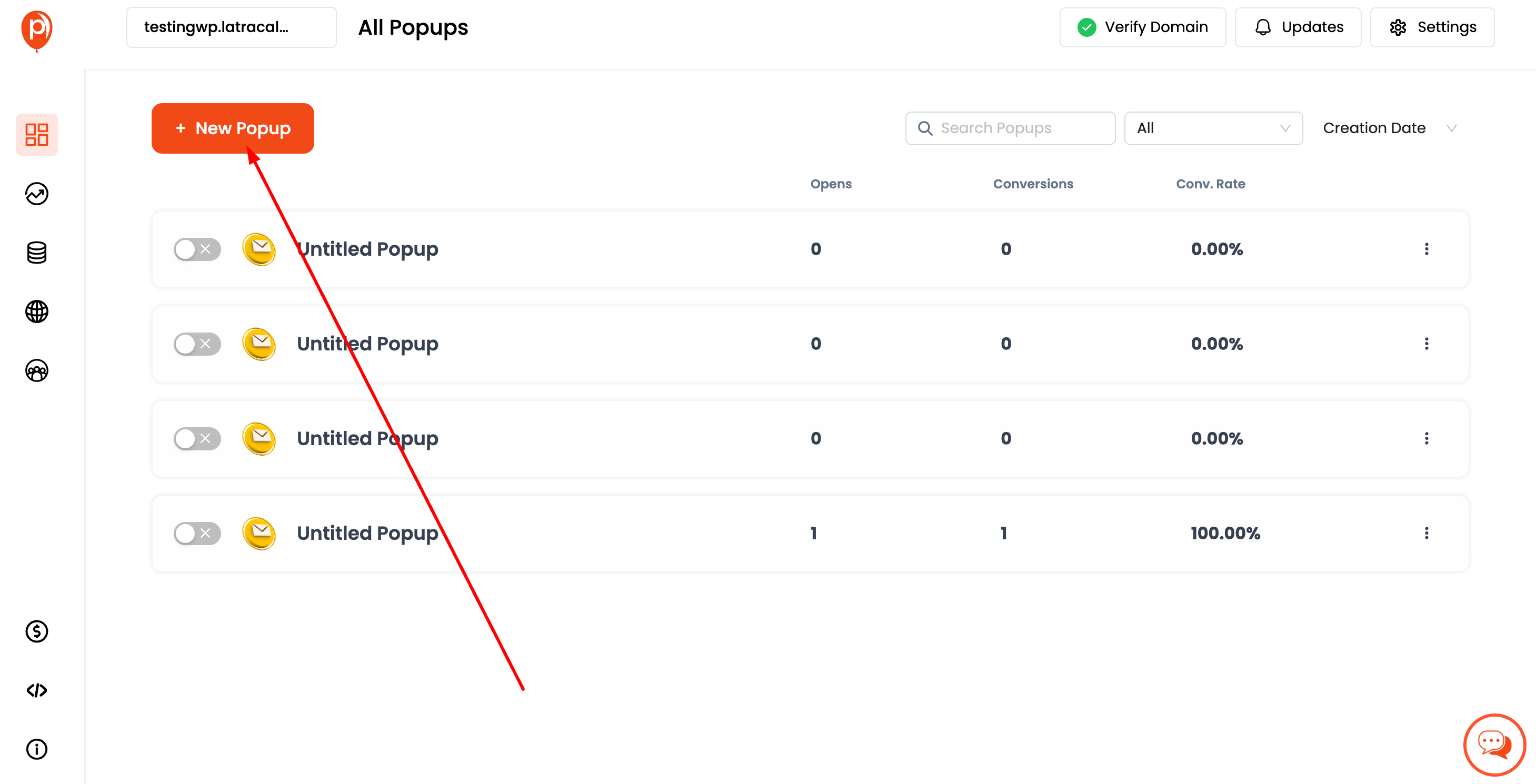
Begin by logging into your Poper account. On the main dashboard, click the "+ New Popup" button to initiate the creation of a new popup.
Step 2: Choosing a Template
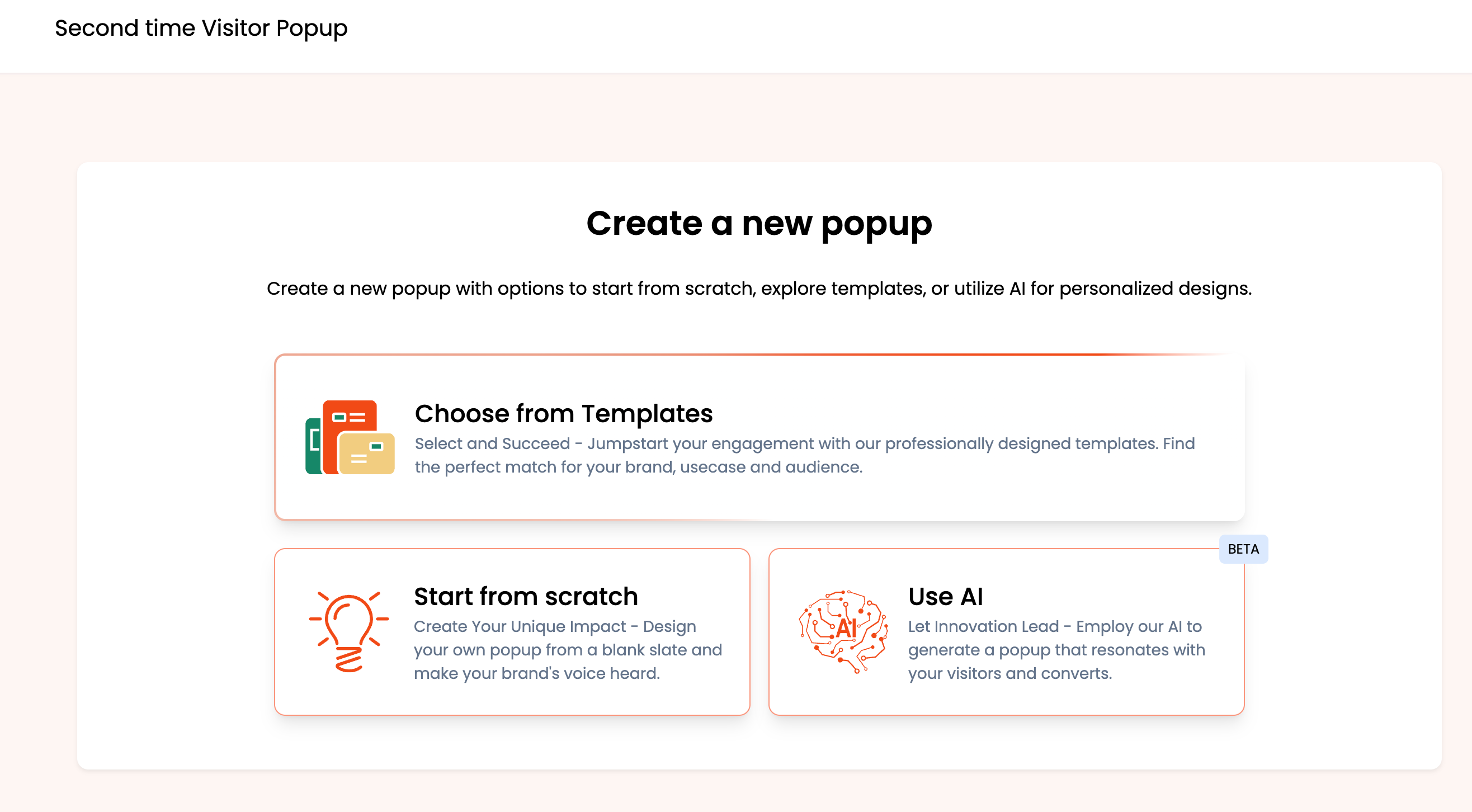
You will be directed to a screen where you can choose how to create your popup. You have three options:
Choose from Templates: Select a pre-designed template.
Start from Scratch: Design your popup from a blank slate.
Use AI: Utilize Poper’s AI to generate a personalized popup.
For this guide, we'll choose a template.
Step 3: Selecting the Right Template
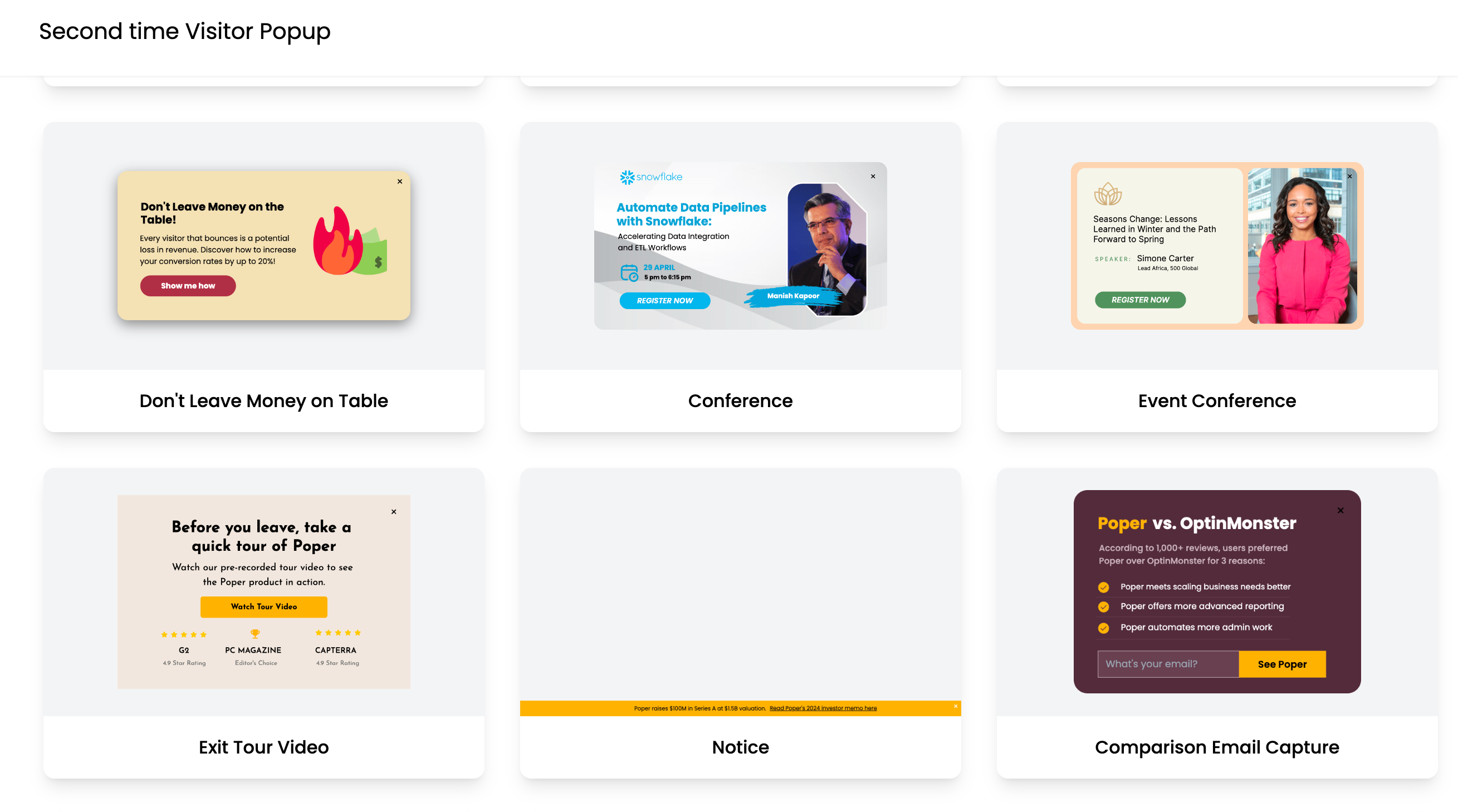
Browse through the available templates and select one that suits your needs for a second-time visitor popup.
Step 4: Customizing the Template
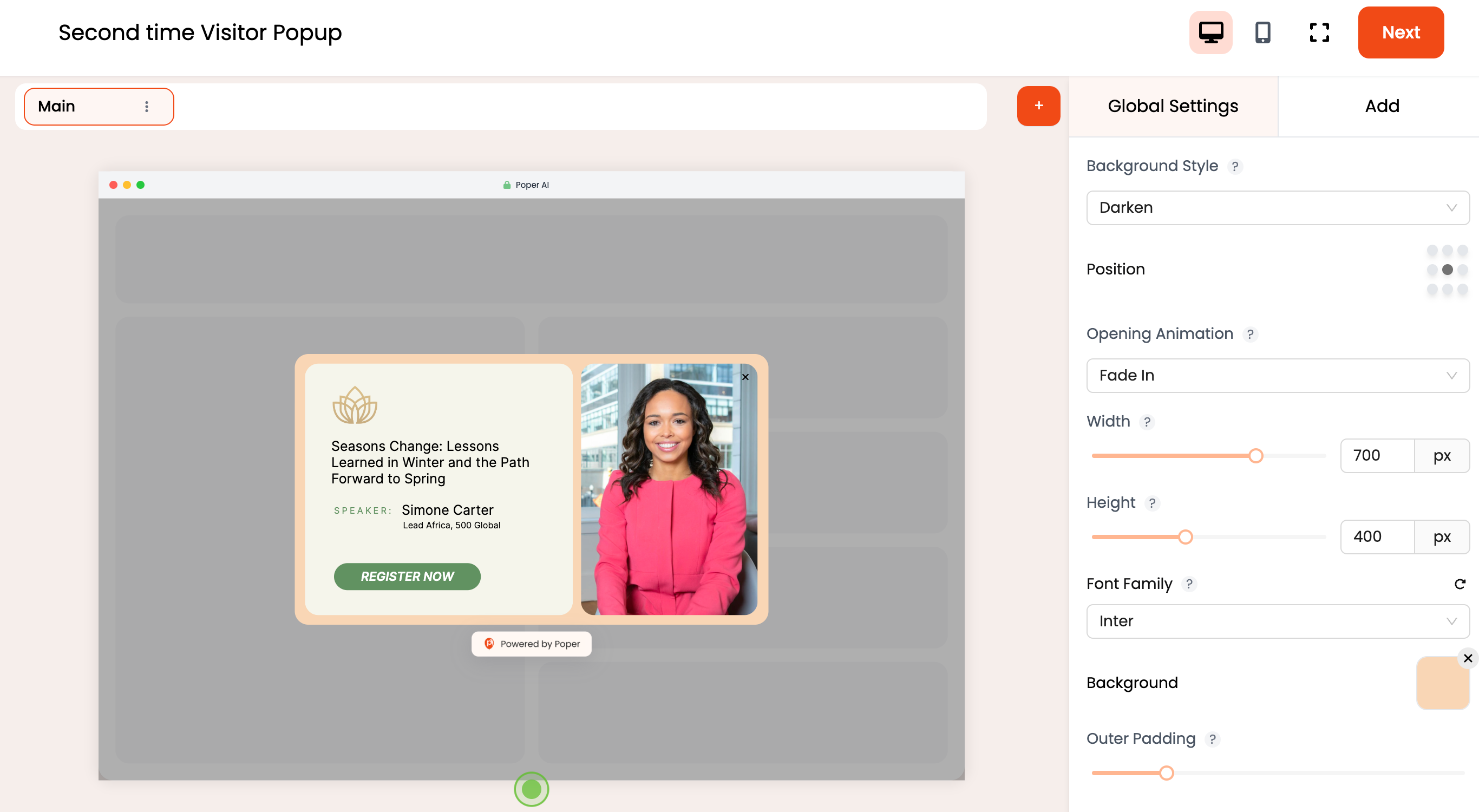
Once you've selected a template, you can start customizing it to fit your campaign. Modify the text, images, colors, and other elements to align with your brand and message.
Step 5: Setting Up Audience Filtering
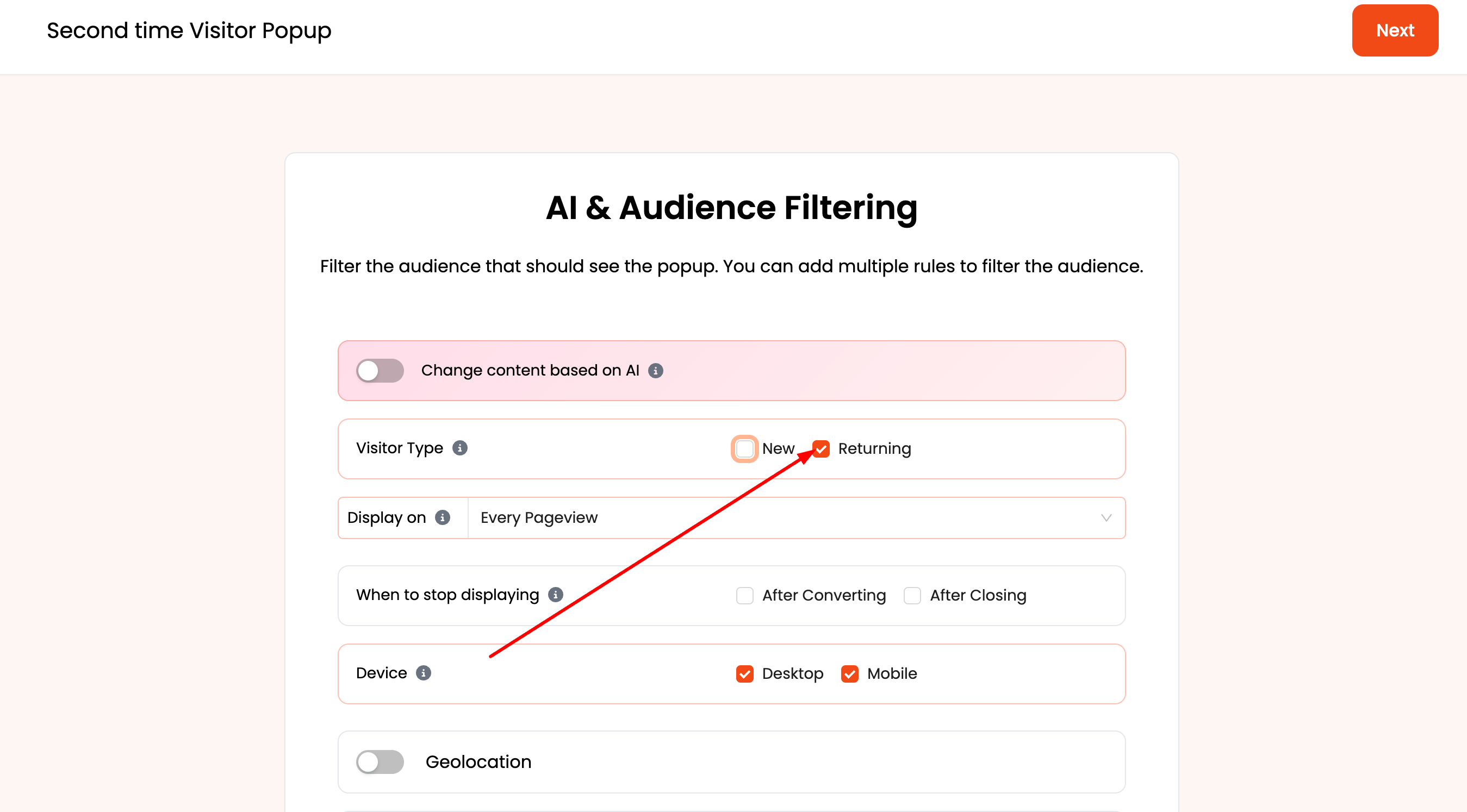
Next, configure the audience filtering options to ensure that your popup only displays to returning visitors. Check the "Returning" box under the Visitor Type settings.
Step 6: Integrating with Email Marketing Tools
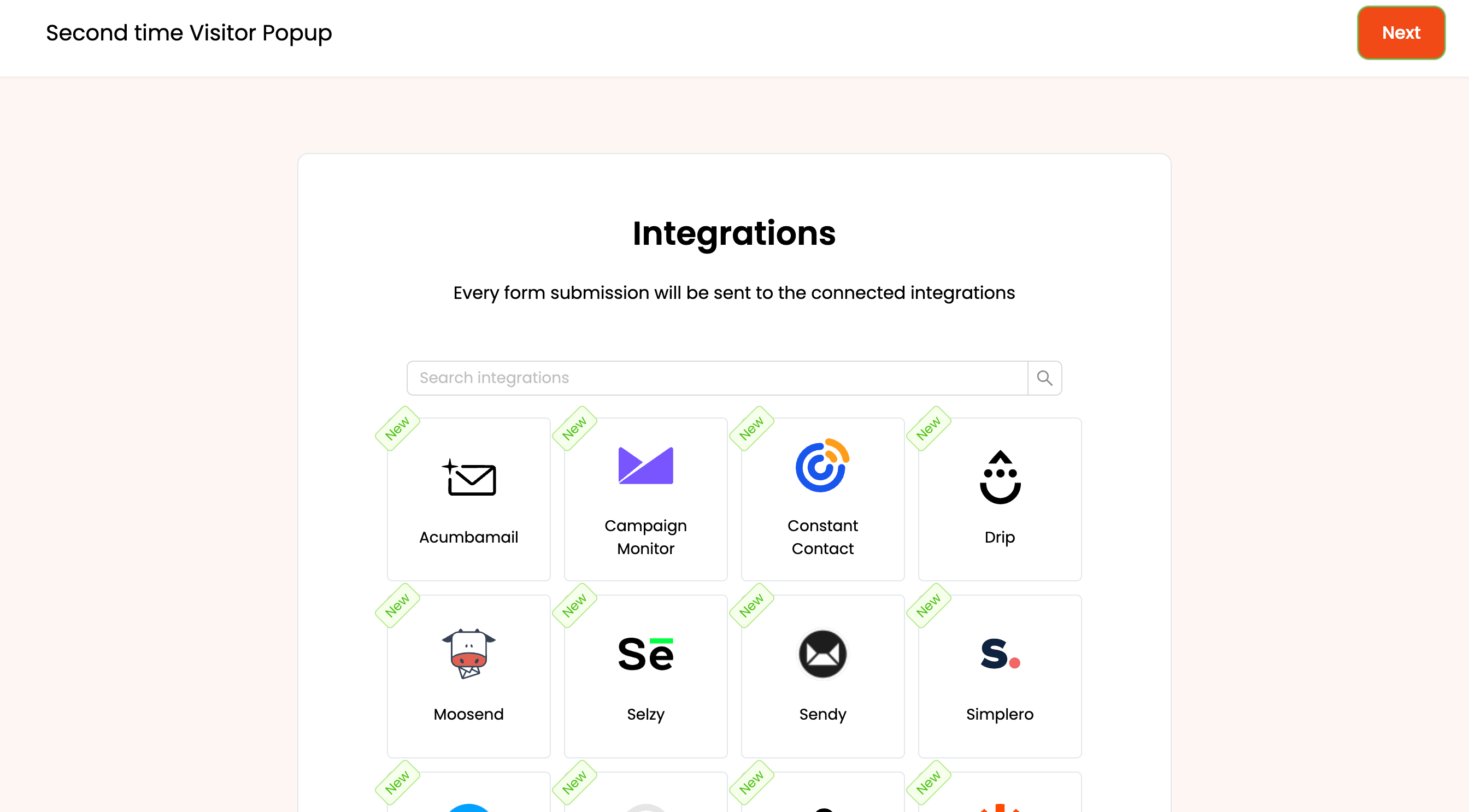
Finally, integrate your popup with your email marketing tools. Select the integration options that match your email service provider from the list available in Poper.
Best Practices and Troubleshooting Tips
Regular Testing: Continuously test different popup designs and messages.
Monitor Performance: Use analytics to track performance and make necessary adjustments.
Seek Support: Utilize Poper’s support resources for troubleshooting and optimization.
By following these steps, you can effectively create and manage second-time visitor popups using Poper, enhancing user engagement and driving higher conversion rates.
Best Practices and Troubleshooting Tips for Poper Popups
Regular Testing: Continuously test different popup designs and messages.
Monitor Performance: Use analytics to track performance and make necessary adjustments.
Seek Support: Utilize Poper’s support resources for troubleshooting and optimization.
FAQs About Second-Time Visitor Popups
What is the average conversion rate for second-time visitor popups?
Conversion rates can vary but typically range from 2% to 7%, depending on the offer and execution.
How often should popups be shown to repeat visitors?
Avoid showing the same popup more than once per session. Set cookies to manage frequency and avoid user fatigue.
Can second-time visitor popups be personalized for individual users?
Yes, using dynamic content and behavioral data, popups can be highly personalized to each user’s past interactions.
What are the best tools for creating effective second-time visitor popups?
Tools like Poper offer robust features for creating and managing second-time visitor popups.
How do you measure the success of a second-time visitor popup?
Track metrics such as conversion rates, engagement rates, and bounce rates to assess popup performance.
Conclusion
Second-time visitor popups are a powerful tool for engaging and converting repeat visitors. By providing personalized, relevant content, you can significantly boost your conversion rates and enhance user loyalty.
Continuously test and refine your popup strategies to keep them effective. Stay updated with the latest tools and techniques to ensure your popups remain a valuable part of your marketing toolkit.


